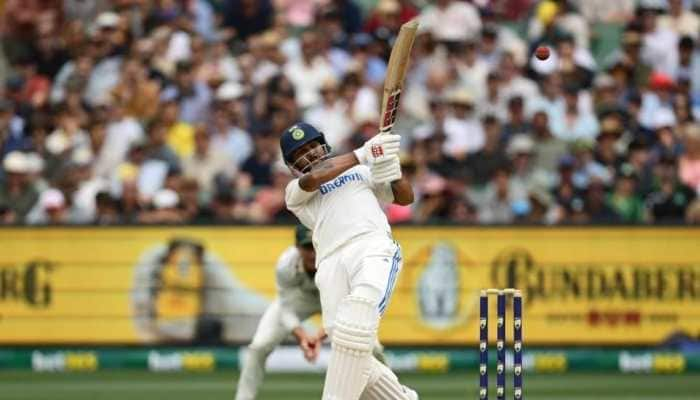Ladakh, where Buddhist spirituality, culture reign supreme
Trending Photos
)
Ladakh -- once the hub of the ancient Silk Route -- is aptly described as a place where Buddhist spirituality and its ancient culture reign supreme amidst virgin nature.
Leh, the headquarters of Ladakh, is connected by road -- open only five months a year due to heavy snowfall -- from Srinagar and the distance of 434 km takes two days with a night halt at Kargil town; and almost equidistant from the picturesque Manali tourist resort in Himachal Pradesh via the picturesque Lahaul Valley. The latter route is more treacherous.
Travelling by air is the most convenient way to reach Leh, available round the year.
"It's a place where spirituality and culture co-exist, where traditional life is thriving by adapting green, modern technologies. It's truly called a crown jewel," remarked British tourist Alfred Martin.
For Malaysia-born Michelle Yeoh, famous for her role in Ang Lee's Oscar-winning martial arts love story "Crouching Tiger, Hidden Dragon", visiting the "rooftop of the world" is a spiritual journey. The analogy, however, was not exactly appropriate as the expression "Roof of the World" generally refers to Tibet.
"It's a spiritual journey for me every time. This land of high mountain passes always reminds me of a stronghold of Buddhist art, culture and spirituality and this spirit of purity is rarely seen elsewhere in the world," Yeoh told IANS.
She was in Ladakh earlier this month for the week-long Naropa festival, a once-in-12-year celebration of the birth anniversary of the great Indian saint Naropa, at the famed 17th century Hemis monastery, located 40 km from Leh.
"From July till late October is the best period to explore ancient monasteries and trek to a host of mountain passes," remarked tour operator Sonam Dawa in Leh.
Ladakh reported a tourism boom in 2015, attracting 146,501 visitors, including 19,075 foreigners, up more than 25 percent from the previous year, according to the local administration.
This year, till July, it saw 161,444 tourists and a majority of the foreigners were from Israel, France, Britain and the US.
The entire Ladakh region is populated mainly by tribals. The climatic conditions are harsh as much of the land is a cold desert where the mercury remains below minus 30 degrees Celsius in winter for weeks on end.
The staple food is barley, wheat, peas, rice, rapeseed and salted tea mixed with yak butter.
From the world-acclaimed Hemis monastery to Druk Padma Karpo School, also known as "Rancho's School" after the Aamir Khan character in the film '3 Idiots', these places speak about the unique spirit of Ladakh, from an ancient past to the innovative present.
Built in 1630 by Druk Staktsang Raspa, a student of the fifth Gyalwang Drukpa, the monastery holds the Hemis Festival every year in summer in honour of Guru Padmasambhava, the eight century Indian guru revered for spreading Buddhism in the Himalayas.
The monastery's museum is a repository of an astounding 1,500 artefacts, some dating back 1,400 years.
Just an hour's steep uphill hike from the Hemis Monastery takes you to the Gotsang cave and retreat centre, a spiritual journey.
Chemdrey, one of Ladakh's greatest fortress monasteries, is 45 km from Leh, en route to the picturesque Nubra Valley and the world's highest salt water lake Panggong that freezes in winter.
The statute of Padmasambhava is the most important statue in the Chemdrey monastery.
The Shrey Palace, located 15 km south of Leh, houses a 12-foot statute of Buddha in the temple of Shakyamuni, one of the largest metal statues in Ladakh.
The palace, which boasts of a view of 108 stupas , is owned by a royal family of Ladakh. Monks of the Drukpa lineage are taking care of it.
Adventure and thrills lie west of Leh.
The mighty Indus and Zanskar rivers are popular for whitewater rafting. The place where the blue waters of the Zanskar and the green of the Indus join, some 36 km from Leh, is known for its most beautiful views.
There is also the famous Sikh shrine, Gurdwara Patar Sahib, managed by the Indian Army, 20 km from Leh.
Getting to Leh:
How to travel: In summer, by public or private transport. From Manali to Leh via Keylong; From Srinagar to Leh via Kargil.
Leh is connected by air from Delhi and Jammu.
Where to stay in Leh: Small hotels, guest houses and even homestays with local people. Interestingly, there are no houses left in Leh, only guest houses.
Buddhist leader The Gyalwang Drukpa, the spiritual head of the 1,000-year-old Drukpa Order, is promoting homestays among the locals by adopting eco-friendly ways.
Stay informed on all the latest news, real-time breaking news updates, and follow all the important headlines in india news and world News on Zee News.
Advertisement
Live Tv
Advertisement







)
)
)
)
)
)
)
)
)
)
